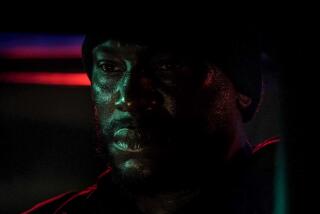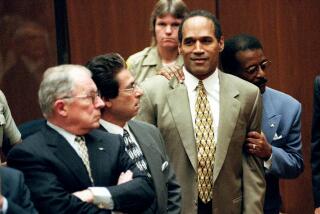Q&A: Ryan Gattis reconstructs the 1992 L.A. Riots in ‘All Involved’
On April 29, 1992, violence erupted throughout Los Angeles in the wake of the Rodney King verdict: A jury had failed to convict four white LAPD officers in the beating of African American motorist King, despite the incident having been captured on video. People took to the streets in a fury that lasted six days, leaving more than 54 dead, more than 2,300 injured and causing nearly $1 billion in damage.
Ryan Gattis’ new novel, “All Involved” (Ecco: 384 pp., $27.95), inspired by the riots, starts with one murder in South Los Angeles, then kaleidoscopes through multiple viewpoints — gang members, firefighters, nurses and graffiti kids — during the days of lawlessness, despair and fury.
Gattis, the author of two prior novels, will appear at the L.A. Times Festival of Books at 12:30 p.m. April 19 on the panel “Untold Stories” with Laila Lalami, Atticus Lish and Nina Revoyr.
FULL COVERAGE: FESTIVAL OF BOOKS
How did you come to the story you tell in “All Involved”?
Being from Colorado originally, my exposure to the riots was through TV footage, primarily relegated to the nightly news. Even then I felt like, “Wait a second. There’s got to be more here.” Years later when I moved to Los Angeles, I would talk to people and ask what they could remember. How did they feel at the time? What were their hopes? What were their fears?
Over time, a number of facts that just kept popping up really set my brain alight in terms of story. The gang inside the sheriff’s department, the Lynwood Vikings — learning about that was a big one. Another example: speaking with the firemen and hearing them say, “The Navy SEAL combat medics did their internships in Los Angeles because we had so many traumatic injuries that they were able to get good experience.” The one thing that stuck with me was just the idea that crimes of opportunity were going on in areas that had no emergency assistance and no police assistance at all.
INTERACTIVE GAME: HOW TO BE A WRITER
What books and footage did you turn to for research?
I had “Twilight” by Anna Deavere Smith, “Fires & Furies” by James D. Delk, “Official Negligence” by Lou Cannon, and although it wasn’t technically about the riots, I think one of my favorite books, which was truly eye-opening, was Miles Corwin’s “The Killing Season.” And I hate to say it, but it was so true — I had YouTube. I had stumbled upon hours and hours of raw footage that someone had uploaded of the riots, someone just walking around with a camcorder for seven hours. You could hear sirens in the distance and the sound of people getting stuck under things. It was terrifying.
There were the news reports, of course. The L.A. Times was enormously helpful, I don’t think I could have written it without the incredibly clean, clear-eyed reporting that was going on there. That’s absolutely indispensable when reconstructing something for historical fiction.
You weave 17 different first-person narratives throughout the novel. Was it challenging moving in and out of different voices?
Yes. I wrote it chronologically — every section you find in the book, that’s the order I wrote it in. But what became difficult was there were characters that I had written before but I had not entered their brains and allowed them to be narrators; after I had gotten inside their heads, I actually had to go back and change all their dialogue. In a way, it was the threading that was the most difficult part, making sure the text felt like it had balance and fidelity and that when you got into a character’s head, you weren’t surprised.
More to Read
Sign up for our Book Club newsletter
Get the latest news, events and more from the Los Angeles Times Book Club, and help us get L.A. reading and talking.
You may occasionally receive promotional content from the Los Angeles Times.






